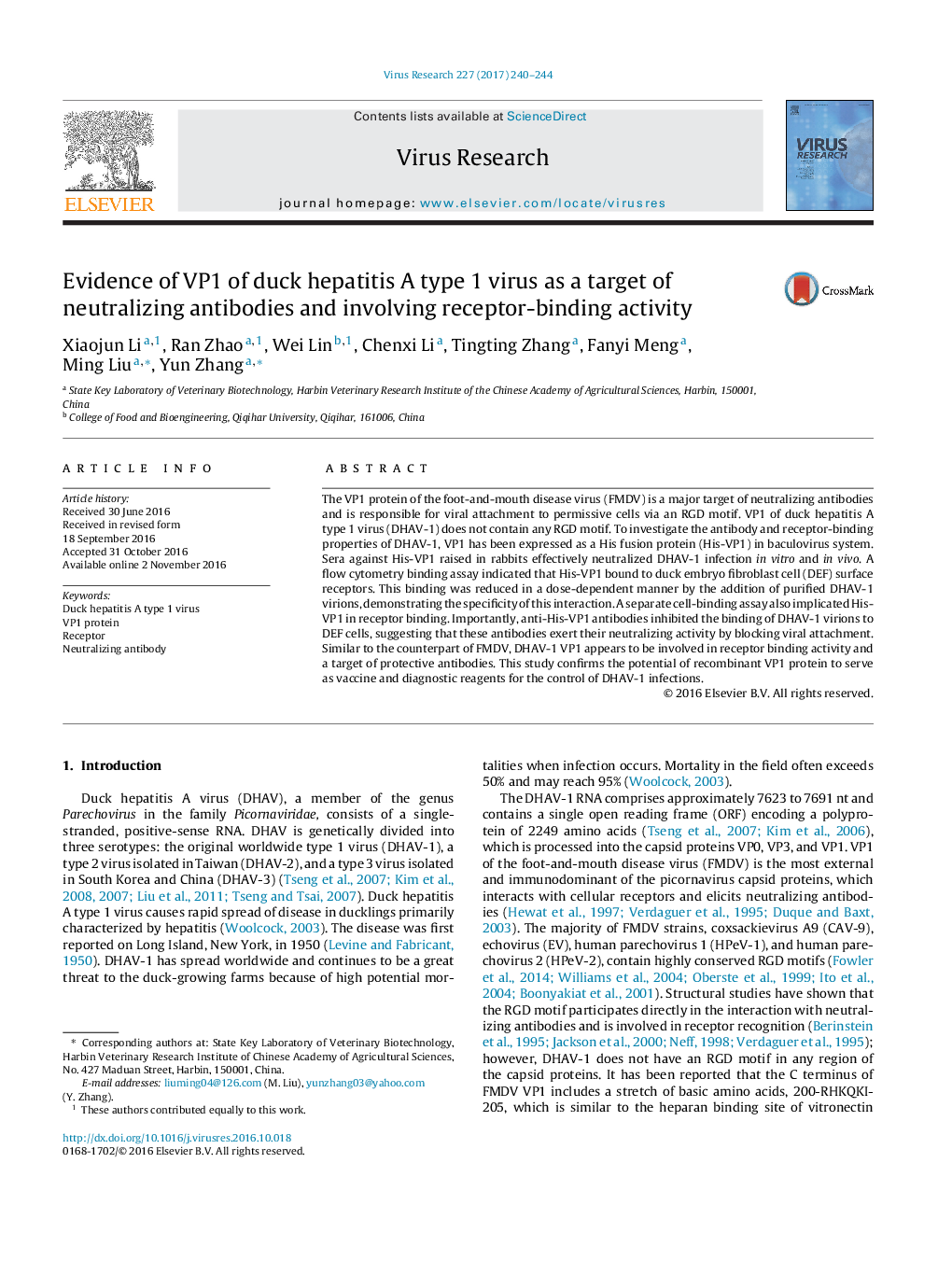| Article ID | Journal | Published Year | Pages | File Type |
|---|---|---|---|---|
| 5675497 | Virus Research | 2017 | 5 Pages |
â¢VP1 expressed in baculovirus system.â¢VP1 involved in receptor binding activity.â¢Sera against baculovirus expressed VP1 can neutralize DHAV-1 infection both in vitro and in vivo.
The VP1 protein of the foot-and-mouth disease virus (FMDV) is a major target of neutralizing antibodies and is responsible for viral attachment to permissive cells via an RGD motif. VP1 of duck hepatitis A type 1 virus (DHAV-1) does not contain any RGD motif. To investigate the antibody and receptor-binding properties of DHAV-1, VP1 has been expressed as a His fusion protein (His-VP1) in baculovirus system. Sera against His-VP1 raised in rabbits effectively neutralized DHAV-1 infection in vitro and in vivo. A flow cytometry binding assay indicated that His-VP1 bound to duck embryo fibroblast cell (DEF) surface receptors. This binding was reduced in a dose-dependent manner by the addition of purified DHAV-1 virions, demonstrating the specificity of this interaction. A separate cell-binding assay also implicated His-VP1 in receptor binding. Importantly, anti-His-VP1 antibodies inhibited the binding of DHAV-1 virions to DEF cells, suggesting that these antibodies exert their neutralizing activity by blocking viral attachment. Similar to the counterpart of FMDV, DHAV-1 VP1 appears to be involved in receptor binding activity and a target of protective antibodies. This study confirms the potential of recombinant VP1 protein to serve as vaccine and diagnostic reagents for the control of DHAV-1 infections.
